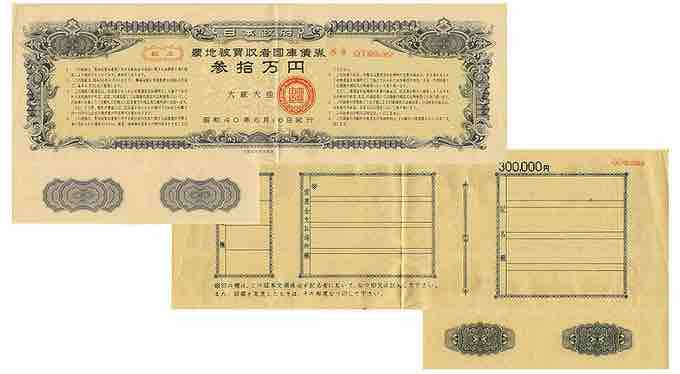In modern finance, a sinking fund is a method by which an organization sets aside money over time to retire its indebtedness by repaying or purchasing outstanding loans and securities held against the entity. More specifically, it is a fund into which money can be deposited, so that over time preferred stock, debentures or stocks can be retired. Sinking funds can also be used to set aside money for purposes of replacing capital equipment as it becomes obsolete .

Farm bond
One purpose of a sinking fund is to repurchase outstanding bonds.
Sinking fund provision of the corporate bond indenture requires a certain portion of the issue to be retired periodically. The entire bond issue can be liquidated by the maturity date. Issuers may either pay to trustees, which in turn call randomly selected bonds in the issue, or, alternatively, purchase bonds in open market, then return them to trustees.
A sinking fund may operate in one or more of the following ways:
- The firm may repurchase a fraction of the outstanding bonds in the open market each year.
- The firm may repurchase a fraction of outstanding bonds at a special call price associated with the sinking fund provision (they are callable bonds).
- The firm has the option to repurchase the bonds at either the market price or the sinking fund price, whichever is lower. The firm can only repurchase a limited fraction of the bond issue at the sinking fund price. At best some indentures allow firms to use a doubling option, which allows repurchase of double the required number of bonds at the sinking fund price.
- A less common provision is to call for periodic payments to a trustee, with the payments invested so that the accumulated sum can be used for retirement of the entire issue at maturity: instead of the debt amortizing over the life, the debt remains outstanding and a matching asset accrues. Thus the balance sheet consists of Asset = Sinking fund, Liability = Bonds
For the creditors, the fund reduces the risk the organization will default when the principal is due: it reduces credit risk. However, if the bonds are callable, this comes at a cost to creditors, because the organization has an option on the bonds: The firm will choose to buy back discount bonds (selling below par) at their market price,while exercising its option to buy back premium bonds (selling above par) at par. Therefore, if interest rates fall and bond prices rise, a firm will benefit from the sinking fund provision that enables it to repurchase its bonds at below-market prices. In this case, the firm's gain is the bondholder's loss–thus callable bonds will typically be issued at a higher coupon rate, reflecting the value of the option.